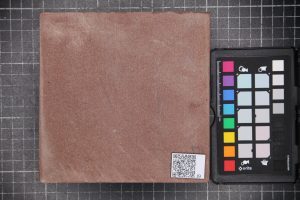
| Reference | J9 |
| NAME | Red St. Bees – BANK END |
| TYPE | Sandstone |
| GEOLOGY | Triassic. St. Bees Sandstone |
| COUNTY | Cumbria |
| COLOUR | Dull red. Darkens considerably when wet |
| TEXTURE | Very fine grained |
| BLOCK SIZE LXBXH (mm) | 900mm depth on bed |
| SUITABILITY | Ashlar, dressings, walling and weathering courses |
| USES (1) | 52-55 Picadilly, London |
| USES (2) | 25-26 Lovatt Lane, London |
| USES (3) | Liverpool Anglican Cathedral |
| USES (4) | College of Domestic Science, Glasgow |
| Stone Names | St Bees Sandstone |
| St Bees Sandstone | St Bees Sandstone was sourced from at least eighteen quarries near the towns of Annan and Kirkpatrick Fleming, in Dumfriesshire. The stone consisted originally of sand that was deposited by rivers during the early part of the Triassic Period (c. 250 million years ago), when Scotland was at roughly the same latitude as the centre of today’s Sahara desert. A tiny proportion of iron, which is in an oxidised (‘rusted’) state, gives the stone a rich orange colour. St Bees Sandstone has been used locally, regionally, nationally and internationally, mainly to form masonry. Today, St Bees Sandstone is extracted for building stone at two quarries in Scotland and two quarries in England. | St Bees Sandstone — Building Stone Database Scotland (bgs.ac.uk) | |
| Intro: St Bee’s Red Sandstone (J9) – Stone Library (shu.ac.uk) |
| Intro: St Bee’s Red Sandstone (J10) – Stone Library (shu.ac.uk) |